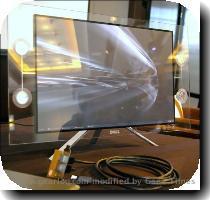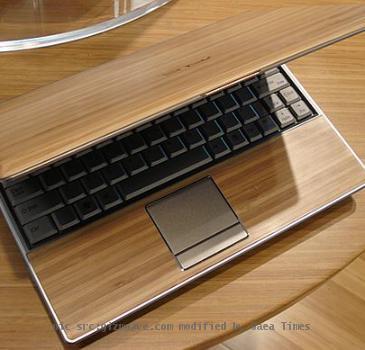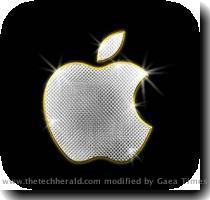Looking for a cheap PC? Industry’s back-to-school woes could lead to deeper price cuts
By Jordan Robertson, APFriday, August 27, 2010
PC industry’s woes could mean bargains this fall
SAN FRANCISCO — If you’re looking for bargains on personal computers, bad news from the industry could be good for your pocketbook.
Computer makers are scrambling for ways to goose faltering consumer demand after a weak start to the back-to-school shopping season. That could mean deeper price cuts and other promotions beyond the incentives that the industry dangled in front of shoppers to lure them into stores during the worst of the recession.
The latest sign of trouble came Friday when Intel Corp. lowered its forecast for the third quarter, saying demand for consumer PCs has been weaker than expected.
Because Intel’s microprocessors are used in 80 percent of the world’s PCs, its forecast essentially speaks for the health of the entire PC industry. Plus, its orders are based on how many computers the world’s biggest PC makers expect to make in the coming months, so weak chip sales now could foreshadow weak results to come from those manufacturers.
Even before Intel announced the latest trouble, two leading PC makers — Hewlett-Packard Co. and Dell Inc. — raised red flags last week about what is normally a robust season for sales.
Dell’s chief financial officer, Brian Gladden, called the back-to-school shopping season “a little weaker than we would have expected.” Todd Bradley, head of HP’s PC division, complained of “softness” in consumer laptops and said back-to-school shopping was off to a late start.
Barclays Capital analyst Ben Reitzes said another factor could cause PC makers to cut prices: In the past few months, the prices for parts such as hard disk drives and memory have fallen — to their lowest levels of the year in August. That gives PC makers the freedom to lower prices while maintaining profit margins.
“This component environment could potentially now allow companies to invest in more aggressive pricing to stimulate demand into next year,” he wrote in a research note Friday.
Intel said it now expects revenue of $10.8 billion to $11.2 billion for the fiscal third quarter, which ends in September. That compares with a previous forecast of $11.2 billion to $12 billion. On average, analysts surveyed by Thomson Reuters had expected $11.5 billion.
Three-quarters of Intel’s revenue comes from its chips and other technologies for PCs. The forecast cut means that PC makers suddenly scaled back or canceled their orders with Intel during the quarter, reflecting the lower demand they’re bracing for in the coming months.
PCs already have low profit margins, and the recession squeezed them further by forcing price cuts to entice shoppers. The strategy worked, but dipping demand could mean that prices will fall even more.
Reitzes said the computer maker with the biggest potential for revenue growth in this market is Apple Inc., whose iPad is seen eating into laptop sales. PC makers such as HP, Dell and others, he said, face a different question in needing to balance aggressive pricing with generating profits.
Consumer spending on discounted computers was instrumental in helping buoy the industry over the past two years, while businesses cut way back.
That trend is now reversing.
Consumers aren’t spending on technology as freely as they were. Uncertainty about jobs is keeping their spending in check.
Meanwhile, businesses have freed their budgets a bit. It’s not necessarily because they’re more sanguine about their prospects. Upgrading technology makes financial sense: Maintaining old machines can be more expensive than buying new ones with more features.
But there are signs business spending is rocky as well.
John Chambers, CEO of Cisco Systems Inc., the world’s largest maker of computer networking gear and another important barometer of technology spending, said in early August that the company was seeing signs that the global economic recovery is slowing down. He said Cisco is getting “a large number of mixed signals” from customers about their spending plans.
Intel’s warning comes a month after the company reported its biggest quarterly profit in a decade.
But those results were fueled by a rebound in technology spending at corporations, many of which held off replacing older computers during the recession.
Intel’s downgrade to its guidance wasn’t entirely a surprise. Many investors simply didn’t believe that Intel would be able to hit the higher numbers because of signals from other PC-industry suppliers that PC sales were collapsing.
Those fears were the main reason why Intel’s stock has fallen about 13 percent since Intel issued its original guidance on July 13. The fall erased about $16 billion in shareholder wealth through Thursday’s close.
After the company released its revised outlook, the company’s shares rose 19 cents, or 1 percent, to close Friday at $18.37, amid a general lift on Wall Street.
Analyst Craig Berger with FBR Capital Markets said that PCs might be “just the first shoe to drop,” and that troubles could spread to other chip-makers, such as those that focus on communications, industrial and automotive sectors. He added that Intel’s main rival, Advanced Micro Devices Inc., is also likely being hurt.
Intel is scheduled to report results on Oct. 12 and plans to update its fourth-quarter and full-year outlook then.
The company has benefited from a recovering PC market for about a year and half. In April 2009, Intel CEO Paul Otellini proclaimed that PC sales “bottomed out” and had started recovering — a forecast that even the major PC makers wouldn’t immediately get behind, but proved to be true.
Now, it appears the market is starting to dip again.
AP Business Writer Andrew Vanacore contributed to this story from New York.
Tags: North America, Personnel, Recessions And Depressions, San Francisco, United States


